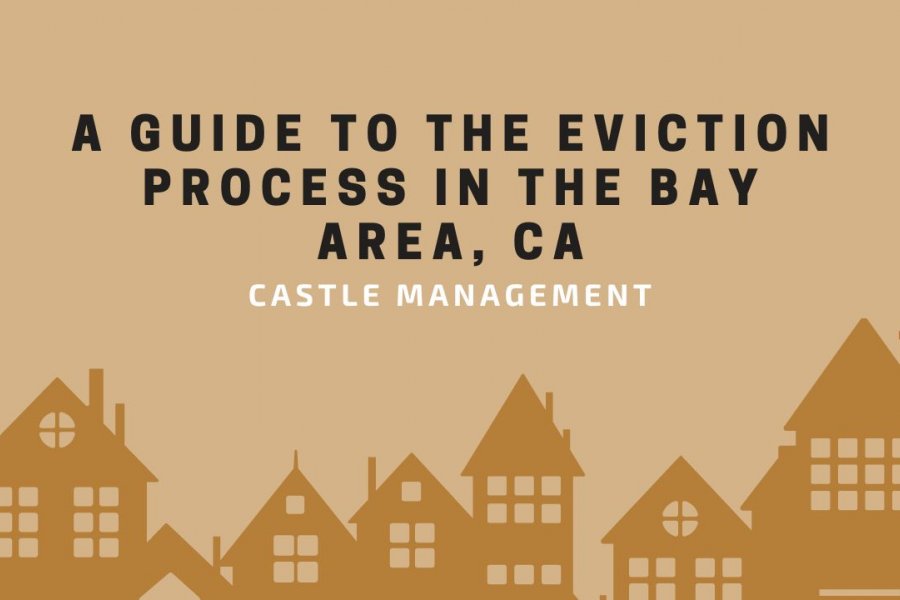
Evictions are something that no landlord ever wants to deal with. But it's always best to be prepared for these challenging circumstances. It's important for landlords to understand eviction laws in California, even if they have a stellar tenant screening process and don't think they'll ever have to evict a tenant.
However, the legal procedures of the California eviction process might be difficult for landlords to understand, which is why we at Castle Management have prepared this guide for you.
Guide to California Eviction Laws
In California, the eviction process is governed by the California tenant law. Read more here. Evictions, also known as 'unlawful detainer lawsuits', are a legal process that occurs when landlords attempt to regain possession of their rental unit from a tenant who has not met their rental obligations.
As a rental property owner, understanding the legal eviction process can help tenants protect their rights and avoid potential pitfalls and the headache of going to court during the eviction process. Let’s have a look at the various steps that are to be followed by the landlord and the tenant in order to complete an eviction.
Termination with Legal Cause
The California Tenant Protection Act prevents landlords from evicting a tenant without just cause. There are legal grounds in which a California landlord can evict tenants, which include the following.
Non-Payment of Rent
If a resident fails to pay rent, property owners may have the legal authority to evict the renter.
According to the statutes governing rental properties in the state of California, the rent is considered overdue beginning the day following the date on which it was originally due.

End of the Rental Agreement
In California, landlords can evict a "tenant at will" or "holdover tenant" who doesn't have a lease agreement or whose lease has ended. There is no requirement for landlords to give a resident prior notice in the following cases:
- Fixed-term leases that have ended.
- There is no lease agreement.
- When no notice is needed, landlords can file an eviction action directly with the court without giving a tenant written notice first.
Lease Violation
Tenants are legally bound to uphold their responsibilities as outlined in the lease or rental agreement that they agreed to and signed in order to rent from the landlord. Here are some examples of rent or lease violations:
- Property damage
- Unpaid rent
- Possession of a pet if pets are not allowed
- Surpassing the maximum number of occupants permitted in the building
- Engaging in unlawful behaviour or criminal activity
Serving a Tenant with an Eviction Notice
It is necessary for landlords to provide their tenant with written notice prior to initiating the actual eviction process. There are four types of notices given to tenants facing evictions in California:
-
3 days to pay rent owed or vacate the property
-
30 days to quit if the tenant stayed for less than 1 year in case of lease expiration

-
60 days to quit if the tenant stayed for 1 year or more in case of lease expiration
-
3 days to cure the issue or vacate in case of violation of responsibilities
-
3 days to quit in case tenant commits serious violation
Tenant Eviction Defences in California
There are reasons a tenant can use in defence of a court eviction lawsuit. They may claim:
- A "Self-Help" eviction attempt is made by the landlord
- Inappropriate eviction of tenant by landlord
- Continued unfair treatment by the landlord, such as misuse of the security deposit
- Discrimination by the landlord against the tenant
If there has been a procedural error, the court may dismiss the unlawful detainer lawsuit, in which case the landlord would have to start the termination and eviction process over from the beginning.
Attending Court Hearing
Once the request for a hearing is submitted by the California landlord, the tenant gets notified of the hearing date and time within 20 days. Both the landlord and the tenant are responsible for bringing the following items to the eviction proceedings:
- A copy of agreement to rent the property
- A copy of the written notice issued by the landlord mentioning the reason for filing execution
- A copy of written complaint
Writ of Restitution
Once a notice for eviction has been filed in California, the landlord may opt for a writ of restitution. This document is issued by the court requiring the tenant to move out of the rental property within five days and remove any personal property from the premises.

The writ of restitution also requires that all compensation due to the landlord must be paid before or on the day of eviction, including any payment plans established between parties.
Regardless of whether the tenant disputed the eviction or not, if the judge rules in favour of the landlord, a Writ of Execution will be issued, and the procedure will continue.
The Eviction
Under California law, when a landlord has obtained a writ of restitution through the courts authorising an eviction, the final eviction will take place after all the paperwork is completed. The tenant must be served with a Four-Day Notice to Quit before the writ of restitution can be enforced by the Sheriff's Office. Tenant's are given a grace period to retrieve their possessions after an eviction.
California Eviction Laws: Bottom Line
The eviction process in California can be a long and complicated one. If you find yourself in the situation where you need to evict a tenant, it is important to seek legal counsel so that you can do so properly and comply with the law.
With the help of an experienced attorney or property management company, you can ensure that your rights are protected, and that the eviction process goes smoothly.
Get in touch with the property management team at Castle Management today if you require assistance in resolving issues with challenging renters or understanding the local rental market. You can rely on our knowledge and experience to guide you through any challenging circumstance.
Disclaimer: This blog should not be used as a substitute for legal advice from a licensed attorney in your state. Eviction laws change, and this post might not be updated at the time of your reading. Please contact us for any questions you have in regard to this content, or any other aspect of your property management needs.
